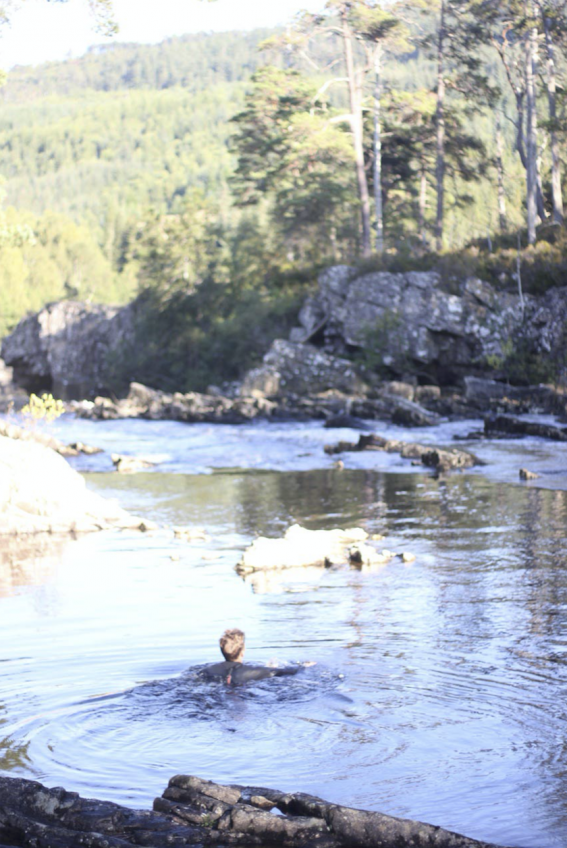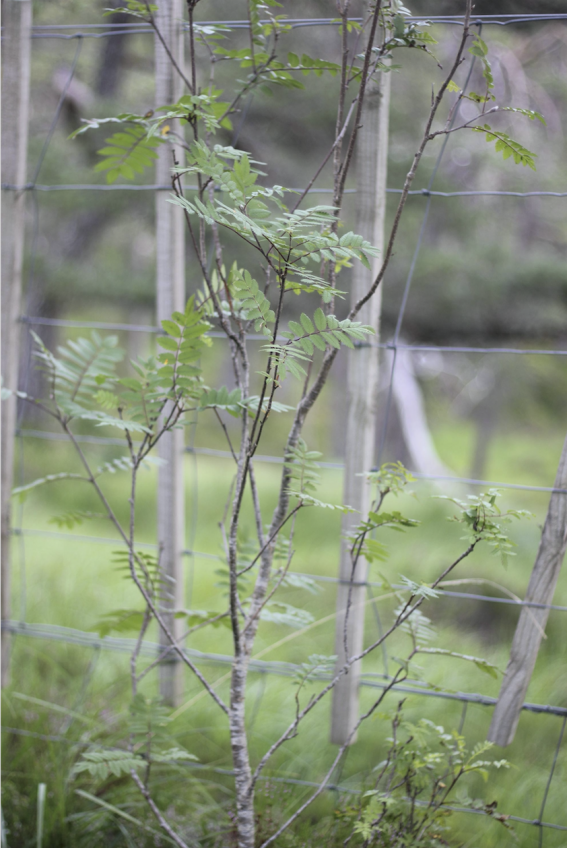An inspired and fulfilling month volunteering
After enduring the most dismal six months of weather I have ever lived through working in the lowlands of Scotland, I arrived on what would be the first of an entire month (for the most part) of gloriously hot, clear September days at Dundreggan, the operational heartland of Trees For Life. A charity with a remarkable long-term re-wilding focus and the goal of restoring the Caledonian forest.
The Caledonian was once a rich ecosystem covering a vast area of over 1.5 million hectares in the Scottish Highlands, supporting a complex variety of species and ecology. Today only 1% of this range remains, but since its conception in 1989 Trees For Life, under the steady hand of its director Alan Watson Featherstone, has planted over 1 million native trees, and aims to plant a further million. The charity’s long term goal is to restore 10% of the forest’s former extent, a 250 year vision that is not as unrealistic as it may sound.
 I had heard tales of Trees For Life five years prior, during my heady university days, and promised myself the romantic vision of questing to the mountains of the great white north (apologies Canada, I’m stealing that one) and laying down a brick in this remarkable project that would hope to undo centuries of damage to the highland ecosystem.
I had heard tales of Trees For Life five years prior, during my heady university days, and promised myself the romantic vision of questing to the mountains of the great white north (apologies Canada, I’m stealing that one) and laying down a brick in this remarkable project that would hope to undo centuries of damage to the highland ecosystem.
A month after setting foot at the door of Dundreggan cottage, how has reality compared to five years of idealistic daydreaming? Well…
The first thing I will say is that no tree planting was done (sorry everyone), as the time for this is late autumn, allowing the saplings to focus on establishing their root growth without too much competition from virulent summer grasses and ground flora. Instead we spent a lot of time mucking in on laying down the groundwork for the future, working in the tree nursery, where much of the magic happens, and surveying for planting sites. But I’m a big boy and a proper-grown-up-conservationist, and I have felt an immense satisfaction from being part of the ecosystem restoration process – such as clearing the landscape of non-native conifer plantation, containing nasties’ like lodge-pole pine (Pinus contorta), allowing native trees and plants to establish and prosper, or carrying out peat-depth surveys for new planting sites (riveting I know).
Volunteering at Dundreggan requires the small moral burden of removing species to facilitate a larger ethical vision of restoring the fabric of a natural ecosystem piece by piece, an act many of the more spiritual volunteers were unprepared to make (for their own personal reasons), romantic misconceptions of forest restoration are rife here, something I feel for all its success, Monbiot’s Feral may be responsible for. Make no mistake however, this is not a ‘bunch of hippies planting trees’. It’s a bold, uncompromising new vision of rebuilding a desolated landscape into a thriving, self-sustaining ecosystem – a vision which according to many of the different foreign pilgrims I have met here, is globally unique.
Dundreggan is a 10,000 acre estate with currently two completed planting sites totaling 200 hectares, and with a new 177 hectare site almost ready for planting in spring 2016 the project is picking up an exciting amount of momentum. There is pioneering work happening in every aspect of the project here; in the nursery experimental endeavors to grow Aspen from seed (a notoriously difficult task and saplings are usually grown from clonal roots) is underway, as is the cultivation of the rare dwarf birch (Betula nana) a tree which tolerates and colonizes the bare, high peaks of mountains and Munro’s, adding yet more diversity and structure to the montane flora. Captive wild boar are being used in an ongoing living experiment to monitor their exceptional ability to reduce the suffocating monoculture of Bracken on a woodland – boar grub up the bracken as a food source creating a beautiful mosaic of ground floral diversity and bio-turbating the soil, facilitating the colonization of new tree saplings.
 The most hopeful, groundbreaking achievement I have seen here is the effect that the extensive (and expensive) fenced exclosures have made, keeping out Scotland’s massively bloated deer population that are literally destroying any chance of new trees growing in the highlands. A visit to Trees for Life’s first ever deer exclosure ‘Coille Ruigh’ highlights just how necessary this work is to the restoration of the forest, as hundreds of new and healthy rowan, birch and Scots pine saplings stare out through the deer fence at a very different circumstance of overgrazing. Carrying out deer pressure and tree regeneration surveys here has really opened my eyes to the scale of the problem, and the imperative importance of the solution. It’s not all glum though; the success of the fencing in promoting young tree regeneration is remarkable, and guarantees the replacement of many of the old pines nearing the end of their lives here.
The most hopeful, groundbreaking achievement I have seen here is the effect that the extensive (and expensive) fenced exclosures have made, keeping out Scotland’s massively bloated deer population that are literally destroying any chance of new trees growing in the highlands. A visit to Trees for Life’s first ever deer exclosure ‘Coille Ruigh’ highlights just how necessary this work is to the restoration of the forest, as hundreds of new and healthy rowan, birch and Scots pine saplings stare out through the deer fence at a very different circumstance of overgrazing. Carrying out deer pressure and tree regeneration surveys here has really opened my eyes to the scale of the problem, and the imperative importance of the solution. It’s not all glum though; the success of the fencing in promoting young tree regeneration is remarkable, and guarantees the replacement of many of the old pines nearing the end of their lives here.
Whether it has been helping to heal the scars dealt upon the landscape by badly planned conifer plantations (which one volunteer here perfectly described as ‘crowded and imposing tree-concentration camps’) or putting in hours of work just to see those two beautiful little green leaves of a tree sapling thrive, volunteering for Trees for Life has been every bit as fulfilling, inspiring and completely perspective changing as I had imagined – when I look at Britain’s landscape now, I no longer see what is there, but what could be – what it is fundamentally missing. I see wolves, lynx, boar, bears, deer and beavers roaming amongst old and beautiful trees all interconnected by all the essentials a thriving ecosystem needs and deserves. When I look upon the bonnie hills of Scotland that I once considered so wild, I now see a fractured and decimated scene, a layer of painfully thin soil crying out for something more. That vision is what Trees For Life stands for, and I am so proud to have been a part of it for this very short time.

